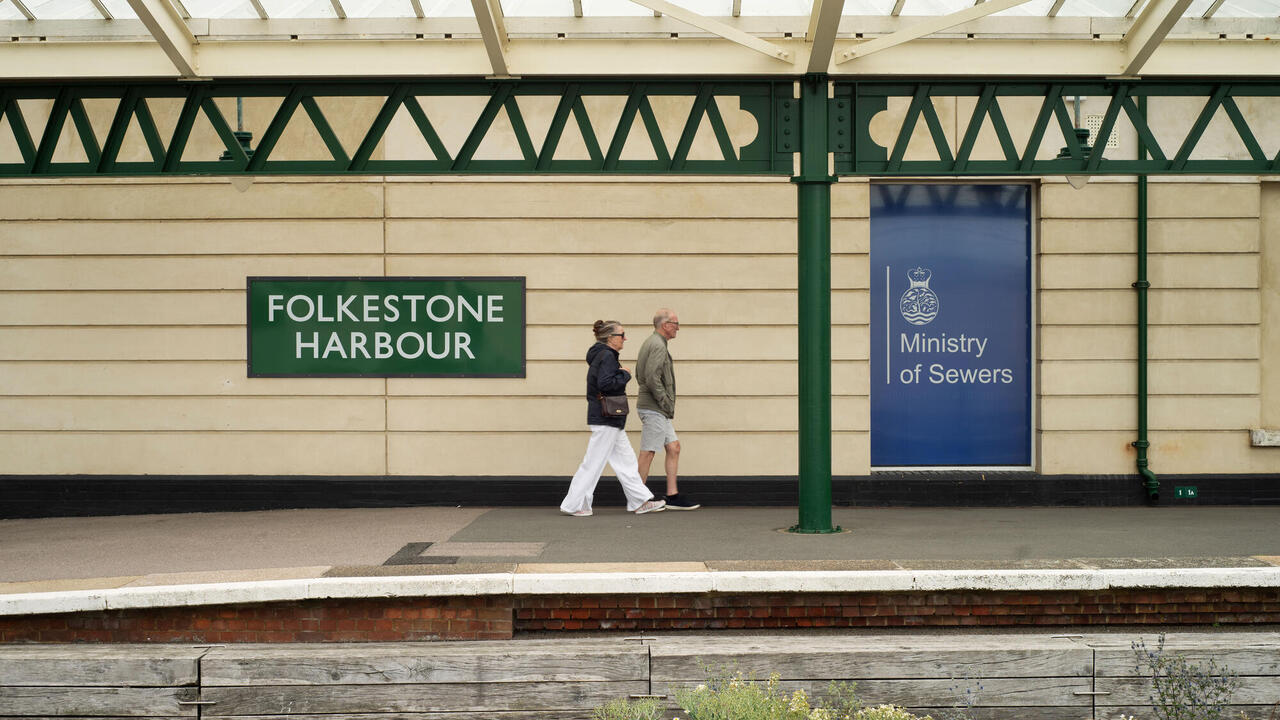The Best Shows to See Across the US in August
From Maja Ruznic’s vertiginous paintings to Aram Saroyan’s exploration of line, discover this month’s top exhibitions
From Maja Ruznic’s vertiginous paintings to Aram Saroyan’s exploration of line, discover this month’s top exhibitions

Maja Ruznic | Karma, New York | 26 June – 23 August

When Maja Ruznic was nine years old, she fled her home of Bosnia and Herzegovina. It was 1992 and a brutal civil war was on the march. One day, at the Austrian refugee camp where she was living, Ruznic found herself in a sandbox. ‘I remember feeling the sand and rubbing it on my thighs and looking up at the sky. I was not raised with any religion, but I could feel the voice of God saying, “You will be okay”’, the painter told The Creative Independent in 2023. She traced her work ‘all the way back to that, because that was my entry into another realm. The sensation of the cosmos made me feel safe.’
The hallucinogenic, vertiginous paintings that comprise ‘The World Doesn’t End’, Ruznic’s two-venue show at New York City’s Karma, are a testament to the artist’s ability to stare into the heart of trauma and see kaleidoscopic possibilities. The show unfolds across two scales: small works in gouache on paper gather in one location, while monumental oil-on-canvas paintings overtake entire walls at the other space just up the street. – Jesse Dorris
Aram Saroyan | Francis Gallery, Los Angeles | 28 June – 31 August

American novelist, playwright, essayist and poet Aram Saroyan is celebrated for his one-word poems designed to defamiliarize language. Three of his poems adorn the walls of ‘Aram Saroyan: Writing with Colors’ at Francis Gallery, a spare yet rich show that intersperses his literary creations with his lesser-known, visual-art output. The exhibition begins by historicizing Saroyan’s practice. Displayed on either side of a central, curved wall are two watercolours on paper made in the summer of 1959, when the young writer, then living in Paris, encountered the work of Russian-born French abstract painter Serge Poliakoff. Evincing the influence of Poliakoff’s Taschisme, Untitled #1 (1959) is characterized by irregular dabs and splotches of colour in a panoply of hues: blue, red, yellow, green and grey. Because it was executed on thin paper – a writerly support – pen marks on the verso bleed through the page. On the opposite side of the wall is the more sensuous Untitled (1959), whose long, curvaceous strokes offer a welcome contrast to Untitled #1’s abrupt blotches of paint. – Tina Barouti
Adam Pendleton | Pace Gallery, New York | 3 May – 16 August

Exhibition design can make for a skilful seductress. I’m well reminded of this at Adam Pendleton’s exhibition ‘An Abstraction’ at Pace Gallery in New York, where the artist has installed his paintings in a maze of black walls which cut sharp diagonals across the gallery. As I meander through this landscape, a drama of concealing and revealing unfolds: tantalizing sightlines afford glimpses of paintings partially obscured by the walls, and a chase to stand in full view of them ensues. For the most part, each side of any given wall is mounted with only one painting, leaving ample space for the pictures to beckon their viewers closer. Adding to the intrigue, many of the works are rendered with intense, highly saturated colour, a striking departure for an artist known for his limited black and white palette.
Yet, despite the refreshing exhibition design and Pendleton’s exciting break into colour, the paintings themselves – particularly those bright ones belonging to the most recent iteration of Pendleton’s body of work ‘Black Dada’ (all works 2023–24) – left me craving more risk. – Zoë Hopkins
Gretchen Bender | Sprüth Magers, Los Angeles | 24 May – 10 August

War, it must be said, is ugly. The advent of photography brought this reality home in a new way, as 19th-century conflicts such as the American Civil War (1861–65) were documented with a harrowing verisimilitude not offered by painting. This sense of immediacy intensified with the rise of television; the horrific visuals coming out of the Vietnam War (1955–75), dubbed the ‘first televised war’, famously shaped US popular opinion. In her multidisciplinary work, pictures generation artist Gretchen Bender probed mediatized violence, examining how images of power and brutality operate as they circulate in mass media. A selection of Bender’s videos and prints, along with archival material, is on view in a solo exhibition, ‘The Perversion of the Visual’, at Sprüth Magers in Los Angeles. – Brandon Sward
‘Social Abstraction’ | Gagosian, Beverly Hills | 18 July – 30 August

Historically, Black abstract art has been characterized as antithetical to activist or overtly political work by Black artists. While the case is often made that such a position is in itself political, the underlying assumption is that non-objective abstraction is unconcerned with such specific, referential content.
This summer, the group exhibition ‘Social Abstraction’, hosted by Gagosian, Beverly Hills, and curated by Antwaun Sargent, proposes another paradigm. The exhibition, which features only Black artists, claims to explore ‘the intersections of nonrepresentational form and social consciousness’, offering an alternative to dominant affiliations of social realism with representational imagery, especially figurative painting. – Jonathan Griffin
Main image: Adam Pendleton, Black Dada Drawing (L) (detail), 2024, paper, silkscreen ink on paper in artist's frame, 96.5 cm × 77.2 cm. Courtesy: © Adam Pendleton and Pace Gallery




















